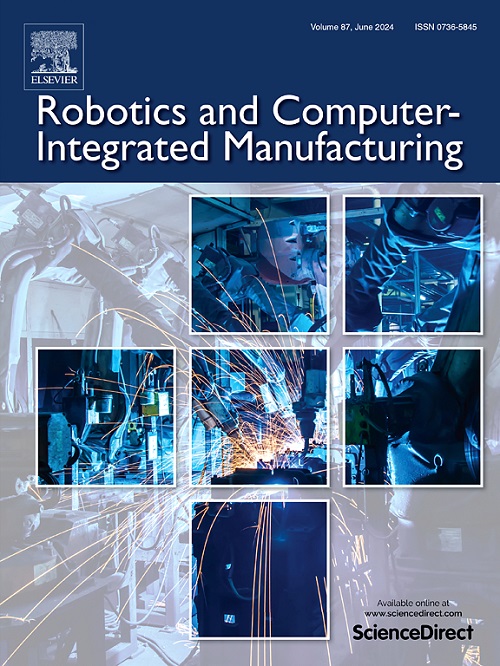Digital twin driven opti-state control approach for smart warehousing in the synchronous operating environment
IF 11.4
1区 计算机科学
Q1 COMPUTER SCIENCE, INTERDISCIPLINARY APPLICATIONS
引用次数: 0
Abstract
Warehouse operations are increasingly subject to internal variability and external disruptions, resulting in unstable task execution, elevated logistics costs, and inefficiencies in inventory management. A major challenge lies in enabling the warehouse system to maintain optimal performance under such dynamic disturbances. However, existing systems often suffer from low levels of data interoperability, asynchronous operations among resources, and the inability to determine and maintain real-time opti-state. To tackle these limitations, this paper proposes a Digital Twin-driven Warehouse Opti-state Control System (DT-WOsCS), which establishes a synchronous operating environment that enables full-dimensional perception and coordination among Smart Warehousing Objects (SWOs). The framework integrates a multi-scale state sensing with an opti-state control strategy to monitor disturbances and adaptively reconfigure operational plans in real time. A Storage Location Assignment Problem with Mixed-Stacking Areas (SLAP-MSA) is developed under this paradigm, capturing both spatial dynamics and operational constraints. To solve the resulting complex scheduling problem, a customized genetic algorithm is introduced, featuring dual-priority chromosome encoding and adaptive perturbation to support efficient opti-state search. A case study in a paint manufacturing warehouse is conducted to evaluate the proposed method. Experimental results show that DT-WOsCS significantly improves warehouse space utilization, reduces operational and transfer costs, and enhances system resilience and stability in the presence of dynamic disturbances.
同步运行环境下智能仓储的数字孪生驱动最优状态控制方法
仓库操作越来越受到内部变化和外部中断的影响,导致任务执行不稳定、物流成本上升和库存管理效率低下。一个主要的挑战在于使仓库系统在这种动态干扰下保持最佳性能。然而,现有系统通常存在数据互操作性低、资源间异步操作以及无法确定和维护实时最佳状态等问题。为了解决这些限制,本文提出了一种数字双驱动仓库最优状态控制系统(DT-WOsCS),该系统建立了一个同步操作环境,使智能仓储对象(SWOs)之间能够实现全维度感知和协调。该框架将多尺度状态感知与最优状态控制策略集成在一起,以实时监测干扰并自适应地重新配置操作计划。在此基础上,提出了一个具有混合堆叠区域的存储位置分配问题(SLAP-MSA),同时考虑了空间动力学和操作约束。为了解决复杂的调度问题,引入了一种自定义遗传算法,该算法采用双优先染色体编码和自适应扰动来支持高效的最优状态搜索。以某涂料生产仓库为例,对所提出的方法进行了评价。实验结果表明,DT-WOsCS显著提高了仓库空间利用率,降低了运营和转移成本,增强了系统在动态扰动下的弹性和稳定性。
本文章由计算机程序翻译,如有差异,请以英文原文为准。
求助全文
约1分钟内获得全文
求助全文
来源期刊
CiteScore
24.10
自引率
13.50%
发文量
160
审稿时长
50 days
期刊介绍:
The journal, Robotics and Computer-Integrated Manufacturing, focuses on sharing research applications that contribute to the development of new or enhanced robotics, manufacturing technologies, and innovative manufacturing strategies that are relevant to industry. Papers that combine theory and experimental validation are preferred, while review papers on current robotics and manufacturing issues are also considered. However, papers on traditional machining processes, modeling and simulation, supply chain management, and resource optimization are generally not within the scope of the journal, as there are more appropriate journals for these topics. Similarly, papers that are overly theoretical or mathematical will be directed to other suitable journals. The journal welcomes original papers in areas such as industrial robotics, human-robot collaboration in manufacturing, cloud-based manufacturing, cyber-physical production systems, big data analytics in manufacturing, smart mechatronics, machine learning, adaptive and sustainable manufacturing, and other fields involving unique manufacturing technologies.

 求助内容:
求助内容: 应助结果提醒方式:
应助结果提醒方式:


